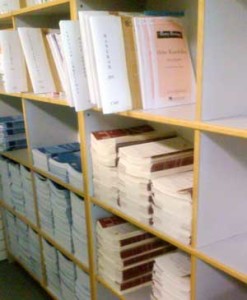Companies large and small go in and out of business all the time, much like the ebb and flow of the tides each day. There is no sector of business immune to it, and sometimes there seems no rhyme or reason for it either. The business of sheet music is no different. Sheet music stores and sheet music publishers rise and fall, rise and fall, akin to a lilting melody in a song.
Some make it and some don’t. Take Carl Fischer sheet music, a tried-and-true music publisher that is celebrating 140 years of service this year to 1,400 sheet music retailers worldwide, Pender’s Music Co. being one of them. Consider this: when the founder of Carl Fischer first opened up for business, he didn’t sell sheet music at all. Carl Fischer, the business, was a musical instrument repair shop, and there is really little in common when comparing band instrument repair with the writing, designing, printing, publishing and distributing of a piece of sheet music.
But what about Southern Music Company, a business that was both a sheet music retailer and a music publisher, too? In February of this year, after 75 years of retailing and publishing, the San Antonio mainstay for music educators, performers and students everywhere closed its doors for good. Of course, it must be noted here that Lauren Keiser Music Publishing eventually took over the publishing division in June, but still, it’s the sign of the times — rise and fall, rise and fall.
Like Carl Fischer, Pender’s Music Co. is also celebrating an anniversary, albeit only 45 years and counting. And somewhat similar to them, our primary focus in the beginning wasn’t sheet music either. Think soda fountain, art supplies, school supplies and more (a little bit of music), sold right on campus to college students. But even more similar? The acceptance of change, and the willingness to adapt to it, with a little bit of risk-taking for good measure.
That’s what small business is best at. That’s what a family-owned business is best at: the germ of the idea, the drive to make it happen, the willingness to cut your losses when necessary, the stick-to-it-ive-ness to ride the rise and fall, the dare to dream big all over again.
And what does all of this have to do with music education, social media, and the digital age? Quite a lot. Over the past few days, we’ve seen the viral video of Carly Rae Jepsen’s “Call Me Maybe” as arranged and performed by the 3Penny Chorus and Orchestra. The 3Penny Chorus and Orchestra is a volunteer pickup ensemble conducted by Arianne Abela, a choral music conductor and educator who graduated from Yale’s School of Music Masters Program in choral conducting in 2010. And Colin Britt, who arranged the music for the group, was one of her classmates. He is now on the faculty at the Hartt School of Music.
We’ve also seen Korean singer’s Psy “Gangnum Style” as performed by the Ohio University Marching Band. These classically trained musicians, educators and students have put their own spin on popular music of today and shared it via social media to millions of people. Brilliant! It’s certainly a positive spotlight on choir, orchestra, and marching band.
As music educators, music makers, and the companies that supply needed goods and services to them move forward, it will be important for everyone to try and adapt to the changes of how media and information is transmitted nowadays. Embracing technology and its power of connecting people to people and products and services to people will be vital to staying strong both in education and in business. Sheet music, just as recorded music and published books before it, is rapidly transforming itself into a more digital-friendly medium — point of purchase digital downloads, online score and part perusal, streaming sample audio, etc. But let’s not forget that the content — that piece of sheet music with the lilting melody — remains the same, and the value of it is truly immeasurable.
Browse the new Carl Fischer Concert Band titles for 2012: listen to recordings, view full scores, shop online!







